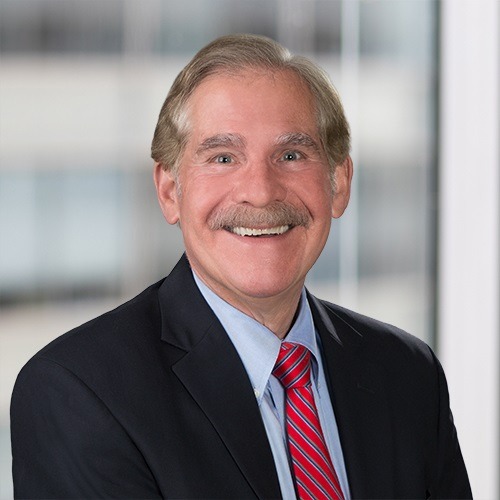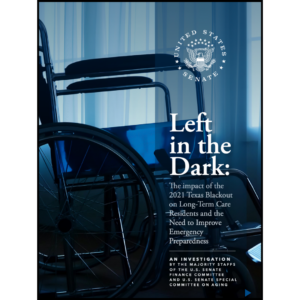Proposed rule extends deadline for SNF sprinkler systems
Prompted by two nursing home fires in 2003 in which 31 residents died, the Government Accountability Office (GAO) did a study that determined neither facility had a sprinkler system.[1] The GAO found that a survey conducted one month before the fire in one of those facilities failed to uncover the lack of fire drills on the night shift, and that the staff failed to implement the facility’s fire plan on the night of the fire. Regarding the other nursing home, the GAO discovered that the state’s post-fire investigation failed to examine the staff’s response, even though it was cited as a deficiency on four prior surveys. GAO also noted that sprinkler systems, although expensive, are the “single most effective fire protection feature.”
As a consequence of the two fires described above and the GAO report, the Centers for Medicare & Medicaid Services (CMS) implemented a number of measures to ensure resident safety, including a re-evaluation of whether it would allow older facilities to continue to operate without a sprinkler system. It decided against continuing that practice. On August 13, 2008, CMS published a final rule requiring all long-term care facilities to have automatic sprinkler systems installed throughout the facility. The deadline for compliance with the new regulatory requirement is August 13, 2013.
On February 7, CMS issued a proposed rule that would extend the August 13, 2013 deadline.[2] In the proposed rule, CMS recognizes that some facilities will not be able to meet the August 13, 2013 deadline “due to the magnitude of the enterprise they are undertaking [such as large scale construction of a replacement facility] combined with recent financial and construction constraints.” Consequently, it proposes to allow an extension of the deadline which would be granted only under very narrow circumstances, described below.
- The proposed rule would add a provision to the current regulation at 42 C.F.R. § 483.70(a)(8)(iii) that would permit a facility to apply for an extension of up to two years, if it satisfied the following four conditions:
- The facility is replacing its current building, or undergoing major modifications in all unsprinklered living areas that require the movement of corridors, rooms, partitions or structural walls or supports, in addition to installing a sprinkler system.
- The facility can demonstrate that it made the financial commitment required for replacing a building or undertaking a major modification of an existing building.
- The construction or modification plans are submitted to state and local authorities for approval prior to applying for the extension to the deadline.
During the time construction is occurring, the facility agrees to take interim measures, determined by CMS, to improve fire safety within the building. Such interim measures might include a fire watch, temporary or additional smoke detection systems in the construction area, increased fire safety inspections, additional fire drills and training for the facility staff.
In additional to extending the current deadline for up to two years, CMS is proposing a renewal of the extension for up to one year. In order for a facility to be eligible for a renewal or second extension, it would have to demonstrate that there are extenuating circumstances beyond its control that prevent completion prior to the end of the first waiver period.
Providers have until April 8, 2013 to submit comments to the proposed rule. Comments can address concerns such as: whether the extension for either a replacement building or a major modification should be limited to the criteria mentioned; what factors CMS should consider when deciding if it will approve a request for an extension; what factors are important in determining the length of an extension; and the proposed provision that would enable some facilities to renew the waiver of the deadline for an additional year.
Comments may be electronically sent to CMS at: https://www.regulations.gov, by following the instructions at “Submit a comment” tab. They may also be mailed to: Centers for Medicare & Medicaid Services, Department of Health & Human Services, Attention: CMS-3267-P, P.O. Box 8010, Baltimore, MD 21244-8010.
Regardless of whether the proposed rule affects a provider, it serves as a reminder to ensure that all staff know how to respond in the event of a fire and that compliance with the Life Safety Code requirements is just as important as compliance with the quality of care requirements.
Alan C. Horowitz, Esq., is currently Of Counsel at Arnall Golden Gregory. He is a former Assistant Regional Counsel, Office of the General Counsel, U.S. Department of Health and Human Services. As counsel to CMS he was involved with hundreds of enforcement actions and successfully handled appeals before administrative law judges, the Board and in federal court. He also has clinical healthcare experience as a registered respiratory therapist and registered nurse. Contact him at alan.horowitz@agg.com.
Disclaimer: This article is not legal advice. Consultation with licensed and experienced legal counsel is advised.
[1] Nursing Home Fire Safety, Recent Fires Highlight Weakness in Federal Standards and Oversight, GAO-04-660, July 16, 2004. Available at: https://www.gao.gov/products/GAO-04-660.
[2] 78 Fed. Reg. 9216 (February 7, 2013). Available at: https://www.gpo.gov/fdsys/pkg/FR-2013-02-07/pdf/2013-02421.pdf.

Alan C. Horowitz, Esq., is a partner at Arnall Golden Gregory LLP, where he focuses his legal practice on regulatory compliance for skilled nursing homes, hospices and home health agencies and manages cases where the Centers for Medicare and Medicaid Services (CMS) has imposed an enforcement action. He is a former assistant regional counsel Office of the General Counsel, U.S. Department of Health and Human Services. As counsel to CMS, he was involved with hundreds of enforcement actions and successfully handled appeals before administrative law judges, the HHS Departmental Appeal Board and in federal court. He also has clinical healthcare experience as a registered respiratory therapist and registered nurse. He can be reached at alan.horowitz@agg.com.
Related Articles
Topics: Alan C. Horowitz , Articles , Disaster Preparedness , Executive Leadership , Facility management , Operations











